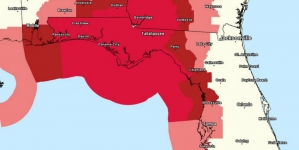-
Tips for becoming a good boxer - November 6, 2020
-
7 expert tips for making your hens night a memorable one - November 6, 2020
-
5 reasons to host your Christmas party on a cruise boat - November 6, 2020
-
What to do when you’re charged with a crime - November 6, 2020
-
Should you get one or multiple dogs? Here’s all you need to know - November 3, 2020
-
A Guide: How to Build Your Very Own Magic Mirror - February 14, 2019
-
Our Top Inspirational Baseball Stars - November 24, 2018
-
Five Tech Tools That Will Help You Turn Your Blog into a Business - November 24, 2018
-
How to Indulge on Vacation without Expanding Your Waist - November 9, 2018
-
5 Strategies for Businesses to Appeal to Today’s Increasingly Mobile-Crazed Customers - November 9, 2018
Study reveals how Jellyfish and Lampreys move with Great Efficiency
Study researcher John Dabiri from the University of Stanford said that the low pressure is produced on top of the umbrella-shaped body of the jellyfish. But Dabiri was sure that there was something else in the case of lampreys and jellyfish. He also says that this mechanism requires much less energy to create enough propulsion as opposed to high pressure which is more commonly used. It’s an wonderful finding that may result in a few different thinking about how animals propel themselves in the water by showing there isn’t just a one-size-fits-all manner for swimming. Scientists have long thought this is the basic way all creatures must move in the water.
Advertisement
Marine animals will typical create what are known as “high-pressure zones” by pushing against water, but jellyfish and lampreys work differently, creating areas of low pressure that forces water past their bodies and propelling them forward. These animals may look vastly different, but they share a common distinction: They’re both among the ocean’s most efficient swimmers.
Researchers are aware of jellyfish and lampreys’ remarkable swimming techniques, but they didn’t know how the creatures move through the water with unmatched efficiency.
To study the movement of these snake-like jawless fish, researchers observed the marine creatures in a tank where microscopic glass beads each measuring 10 micrometers across were placed in the water.
Tracking these beads through the water – a technique called particle image velocimetry – is great for determining the movement of the water, but it’s more hard to use that information to tease out the water pressure.
The researchers found that the jellyfish and normal lampreys were bending their bodies in a way that created low-pressure zones at the curves, causing water ahead of them to rush in and fill those zones.
Previous studies have shown that jellyfish and eels can move using very low amounts of energy that would make a Toyota Prius jealous. The vortexes, which travel down the length of the creature, generate a low pressure region that creates forward pull, effectively sucking the animal as it swims through the water. That is, they progress forward not by sucking so as to act against the water but rather it toward themselves. And while there were high-pressure zones created in this process, Dabiri’s team found that those zones were essentially the byproduct of the animal’s motion, not the reason for it.
“The animals are pulling the water ahead of them backward, and so it’s the difference between using ropes to move around versus something stiff that you can push against”, Dabiri said.
Advertisement
“As of not long ago, it has been generally accepted in the writing and the books so as to read material that creatures swim basically against the liquid to produce high force and advance the creature”, said Brad Gemmell of University of South Florida in a discharge. Understanding how animals move so efficiently through water is also important to engineers who study bio-inspired design and take ideas from nature to make more efficient underwater vehicles.




























